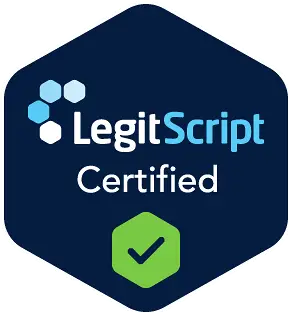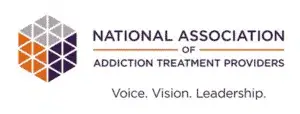What do the words skippy, roses, hearts, and bennies have in common? They’re all slang names for prescription stimulant medications, according to the National Institute on Drug Abuse (NIDA), and they’re words more and more people are using.
That’s because more and more people are choosing to add stimulants into their everyday routines. They may think they’re doing their bodies a favor by adding in a chemical that makes them feel good, but in reality, they’re polluting vital tissues with substances that can cause a great deal of harm.
Uses for Prescription Stimulants
Prescription stimulant medications are made to help soothe chemical imbalances inside the brain. People take these medications to help them avoid:
- Bouts of hyperactivity
- Disorganized thinking
- Impulsivity
- Repetitive movements
When prescription stimulants hit the bloodstream of someone with a mental health disorder like ADHD, the medication helps, soothes, and relieves. The chemical changes are beneficial.
This Season, Give Yourself the Gift of a Fresh Start.
Whether you are struggling with addiction, mental health or both, our expert team is here to guide you every step of the way. Don’t wait— reach out today to take the first step toward taking control of your life.
Even so, doctors are aware that these medications are powerful. Doctors are so aware, in fact, that they’re required to limit prescriptions to a 30-day supply, and they’re required to provide ongoing assessments to any patient with a prescription, according to Physician Health Services, Inc. Doctors can’t just dole these medications out to anyone. They must be careful, because these are drugs with deep powers, and it’s those powers that make these substances so very addictive.
Why are Stimulants Misused?
Prescription stimulants like Ritalin are some of the most abused substances available right now. In fact, the National Alliance on Mental Illness suggests that about 900,000 Americans use these drugs for recreational purposes each and every month. That’s a huge number, and the drugs’ popularity comes because the substances are so very powerful.
While people who take stimulants due to mental illnesses might feel relaxed and focused while under the influence, people with a more standardized form of brain chemistry can have an entirely different experience when they pop a stimulant pill. For these people, according to the Partnership for Drug-Free Kids, the medications tend to boost a feeling of euphoria.
Euphoric feelings are available in everyday life. When people smell fresh flowers, hear a favorite song, or see a loved one, the brain releases a little boost of chemicals associated with pleasure. People feel flushed, happy, and giddy for just a moment, all due to those chemicals. Stimulants cause that same set of sensations, but they’re bigger and they last longer.
When euphoria lasts and lasts, it’s hard to forget. Sometimes, people who experience these sensations become desperate to feel them again. Even though the cost might be high, and even though they may be required to pay even more down the line, they might not be able to stop.
Signs of Stimulant Abuse
People who abuse stimulants might not advertise the issue openly. Deep down inside, they probably know that what they’re doing is not quite right and not quite accepted. So they might work very hard to keep the whole thing under wraps, so they can keep on abusing the substances they like without arousing any suspicion in the people they know and love.
Prescription stimulants tend to cause physical changes that are very hard to cover up. Signs might include:
- Dilated pupils, even in bright rooms
- Insomnia
- Anorexia
- Red eyes
When people are very intoxicated with stimulants, they might seem revved up and energetic, as though they could handle twice the tasks in half the time. They might talk incessantly, pace back and forth, and gesture wildly. They may not make a great deal of sense.
When the drug wears off, and these drugs always do, these people may feel a crash. Their bodies are tired and worn ragged by all of that energy during the high, and they might need to spend hours sleeping to make up the deficit. They might also seem desperate to get more drugs, so they can get that high feeling back once more.
Statistics on Stimulant Abuse
Anyone might fall into the trap of abusing stimulants. After all, most people like feelings of euphoria. If they can get them in pill form, they might be all too willing to take those pills. But some people seem especially prone to abusing these drugs.
Notably, research suggests that college students are particularly enamored with prescription stimulant drugs. In a study of close to 11,000 college students published in the journal Society for the Study of Addiction, researchers found that 4.1 percent had abused stimulants in the year prior.
College students seem to believe that stimulants make learning easier. While under the influence, they’re able to stay awake for longer periods of time. They might feel as though they’re more focused while under the influence. In reality, however, the work that they do while high might not be even close to admissible in the classroom.
Stimulants make users feel powerful and invincible, so students can’t assess their work with a critical eye when they’re high. When sobriety returns, they may see that problem, but by that point, they may be too tired to fix it.
Students aren’t the only ones required to handle many late nights. People doing shift work sometimes use stimulants to help them stay awake late at night, when they should be sleeping. Law enforcement officers and fireman might use these drugs to help them stay focused in stressful situations.
Treatment for Stimulant Addiction
There is no pill or shot that can cure a stimulant addiction. Instead, people who have a history of this type of drug abuse can heal through therapy. They’ll work with a counselor and discuss why the drug abuse began and why they want to get better. In some sessions, they’ll just talk and learn. In other sessions, they’ll role-play and practice. In time, they’ll understand the addiction and develop skills that can help them to avoid more drug use in the future.
Some people need help with other drugs when they enter treatment for prescription stimulants. According to a study in the Journal of Pharmacy Practice, those students abusing stimulants were 4.5 times more likely to use other illicit substances, when compared to students who didn’t abuse stimulants. Research like this suggests that at least some people come to stimulant rehab facing a need for help for other types of drugs. They can recover, but they might need a program that can handle poly-drug abuse.
Finally, some people who enter stimulant rehab need help with underlying mental illnesses, including anxiety and depression. These people may have been self-medicating their illnesses with prescription stimulants for years, and without those drugs, they might feel more than a little lost.
In a dual-diagnosis rehab program, they can get help for the addiction and the mental illness, all at once in the same facility.
If you’re living with a stimulant abuse problem, or you know of someone who needs help with stimulants, The Recovery Village at Palmer Lake could be the solution you’re looking for. Call today to speak to one of our admissions representatives.







